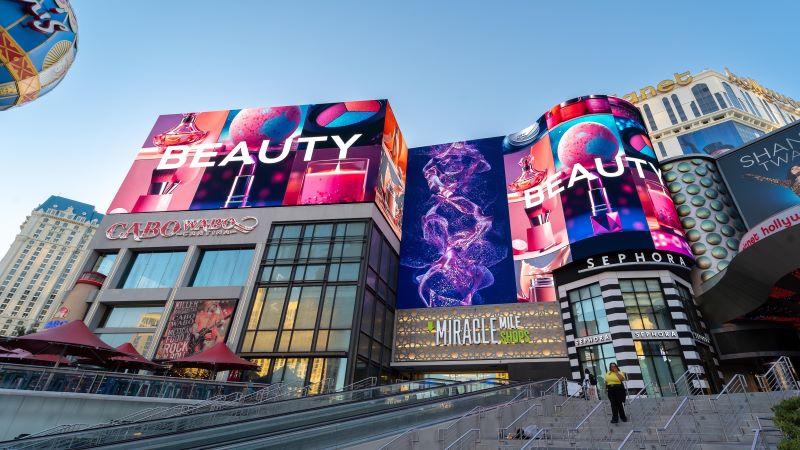Videowalls and digital signage may well be poised to outperform many other AV solution areas in the coming years. That’s at least what Commercial Integrator’s Videowall and Digital Signage Deep Dive, which launches this month, suggests.
This blog summarizes some of the key insights from our in-depth Deep Dive report.
Videowalls and Digital Signage: Growing with Broad Potential
With widespread applications, robust growth projections and transformative technologies, videowalls and digital signage represent promising opportunities for AV integrators. However, unlocking all this potential requires a shift in mindset — from hardware sales alone to services and content-driven models.
The digital signage and videowall markets are set for healthy growth both this year and beyond. According to Mike Sullivan-Trainor, senior industry analyst at AVIXA, digital signage is quite robust. “AVIXA’s 2024 Industry Outlook and Trends Analysis (IOTA) five-year forecast…reported an expansive digital signage market, already at $41.4 billion worldwide,” he says. The market is expected to grow 6.8% this year, swelling to $44.2 billion as technology evolves and use cases expand.
Charlie Yerkes, design consultant at CTI, highlights how advertising use cases are fueling this growth. “Companies are using it more and more to connect with customers and highlight their products, and it’s working out great for them,” Yerkes explains. He emphasizes that, in a media-saturated world, digital signage’s ability to quickly grab attention provides an invaluable edge.
Bryan Meszaros, CEO of OpenEye Global, delineates three key indicators that support optimistic growth predictions. First, he says, more digital signage suppliers are attending trade shows. Second, an increasing number of integrators are taking an interest in digital signage services. And third, design agencies are integrating digital signage into curated environments.
From Hardware to Services and Content
The days of solely selling hardware — whether for videowalls, digital signage or any other technology category — are fading. Many integrators are pivoting to managed services and recurring revenue (RMR) models to futureproof their businesses. Chad Jasinski, owner of Rogue Installations, underscores the necessity of this shift. “The entry point is, ‘I’m going to sell you the hardware.’ But the long-term stretch is, ‘I have you on the subscriptions for all these things.’ I want to manage that,” Jasinski advises.
Sullivan-Trainor reinforces this perspective, citing AVIXA research indicating a growing opportunity in managed services for digital signage, which is forecast to enjoy a 13% CAGR through 2029 and which drove $1 billion of revenue in 2024 alone. “Digital signage is the second-highest revenue taker for pro AV managed services and maintenance, as the industry moves closer to platform-based implementations,” he says.
Parker Dalton, director of sales and marketing at TVS Pro, outlines the integrator’s role in ensuring uptime and building client trust. “Clients expect high uptime, proactive maintenance and remote troubleshooting capabilities. By providing a comprehensive solution that includes both hardware and ongoing services, integrators can position themselves as indispensable partners, reducing competitive threats,” he explains.
Beyond services, content creation presents another pivotal opportunity. Meszaros argues that curating and managing content can yield significant returns. “Don’t underestimate the opportunity to present creative solutions to your client. Because there’s a revenue stream to be had, and it’s a revenue stream that, if presented properly, will surpass the amount of money the client spends with you on that initial development or deployment of a solution,” Meszaros asserts.
Even if integrators don’t directly handle content creation, they must develop partnerships with specialists. To Jasinski, collaboration of this sort is non-negotiable. “You need to at least have a partner in that world. If you can’t figure out the content delivery side yet, partner with somebody who knows it well enough. They can even white label something for you,” he recommends.
Videowall Technologies Leading the Market
Among display technologies, DVLED is emerging as the clear leader for videowalls. Sullivan-Trainor points to its efficiency, high resolution and falling prices as drivers of adoption. “LCD videowalls will be increasingly replaced by LED videowalls in the fine-pixel-pitch product category due to the decreasing price difference between these two technologies,” he explains.
Jasinski observes how DVLED is becoming synonymous with sophistication, particularly in corporate applications. “It seems like the DVLED wall has become the new ‘flex’ in the conference room. Where it used to be a $500,000 solid oak table, it’s now a 163-inch fine-pitch DVLED videowall at the end of the table,” he notes.
Parker elaborates on DVLED’s advantages, praising its “…seamless scalability, remarkable lifespan and not being subject to environmental restrictions, such as ambient light conditions, glare/reflection or limited viewing angles.”
However, LCD solutions hold enduring appeal for budget-conscious clients. Yerkes acknowledges their limitations — such as visible bezels — but highlights their affordability and accessibility for smaller projects.
For ultra-premium applications, technologies like OLED also merit consideration. Yerkes emphasizes the technology’s ability to deliver stunning color accuracy for upscale environments, even while conceding that cost and durability remain challenges.
Videowalls and Digital Signage: Positioning for Long-Term Success
Sullivan-Trainor sums up the strategy for achieving growth in digital signage and videowalls: customization and partnership. “Catering solutions to innovative use cases, adapted to certain industries or regions, will open new pockets of revenue. The transformation required will encompass a new partnership among industry players, where manufacturers work more closely with integrators and consultants to deliver catered solutions,” he says.
Parker echoes this sentiment, emphasizing the importance of user experience. Clients don’t just want displays; they want engaging, reliable solutions, he concludes. Integrators who align with this thinking will create meaningful, results-driven installations.
For AV integrators whose businesses adapt by offering holistic solutions that encompass hardware, services and content, digital signage and videowalls offer not just steady growth but ample room for innovation and impact.
To learn more about this lucrative market, read Commercial Integrator’s complete Videowall and Digital Signage Deep Dive report.

















